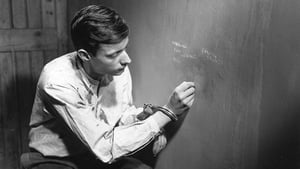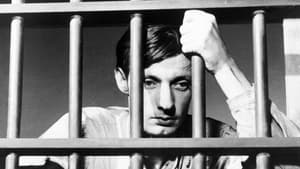Contact: [email protected]
Video Sources 0 Views
- Watch trailer
- A Man Escaped Colorized


Synopsis
[ez-toc]




Introduction
In the annals of cinematic history, few films possess the enduring allure and impact as the 1956 classic, “A Man Escaped Colorized.” Recently, this masterpiece has undergone a transformative color makeover, breathing new life into its evocative narrative. Directed by the renowned French filmmaker Robert Bresson, “A Man Escaped Colorized” unfolds against the backdrop of World War II and the French Resistance, offering a poignant exploration of resilience in the face of adversity. This article delves into the significance of the film, the meticulous process behind its colorization, and the ongoing debate surrounding the preservation of cinematic heritage.
Read Media File Transfer Agreement: Terms and Conditions
Read FAQ
The Story Behind A Man Escaped Colorized
Robert Bresson’s “A Man Escaped Colorized” is a cinematic triumph that transcends time. Set in the Montluc prison during the height of World War II, the film follows the harrowing journey of Lieutenant Fontaine, a Resistance fighter imprisoned by the occupying German forces. The narrative draws inspiration from real-life events, capturing the tension and courage of those who defied oppression.
Bresson, known for his distinctive cinematic language and minimalist approach, skillfully navigates the complexities of Fontaine’s escape plan. The film not only serves as a riveting thriller but also as a historical document that immerses viewers in the struggles of the French Resistance.
Retaining Authenticity: Cinematic Style and Narrative Techniques in A Man Escaped Colorized
Bresson’s cinematic style is a key element that elevates “A Man Escaped Colorized” to iconic status. Eschewing traditional methods, he employs a unique blend of non-professional actors and a minimalist aesthetic, creating an immersive experience that resonates with authenticity. The film’s silent yet powerful narrative unfolds through carefully chosen details and precise compositions, allowing the audience to connect with Fontaine’s internal struggles on a profound level.
The use of silence and meticulous sound design further enhances the film’s impact. Every footstep, creaking door, and whispered conversation serves a purpose, underscoring the intensity of Fontaine’s confinement and his unwavering determination to escape. This innovative approach to storytelling has left an indelible mark on the cinematic landscape.
Colorizing a Masterpiece: The Creative Process Behind A Man Escaped’s Color Makeover
The decision to colorize a classic like “A Man Escaped Colorized” is a bold step that invites scrutiny and anticipation. The color makeover aims to introduce this timeless tale to a new generation while paying homage to its original black-and-white aesthetic. The restoration process involves meticulous attention to detail, ensuring that the colorization remains faithful to Bresson’s vision.
The colors chosen are subtle and nuanced, preserving the film’s somber atmosphere. Shadows and highlights are carefully balanced to maintain the chiaroscuro effect, a testament to the commitment to authenticity. This endeavor is not merely a cosmetic enhancement but a thoughtful restoration project, breathing new life into the visual tapestry of a cinematic masterpiece.
1. Fontaine: The Unyielding Spirit of Resistance (Character Analysis)
At the heart of “A Man Escaped Colorized” is the character of Fontaine, portrayed with remarkable authenticity by the non-professional actor François Leterrier. Fontaine becomes a symbol of resilience, embodying the indomitable spirit of the French Resistance. His journey, fraught with tension and danger, reflects the broader struggles faced by those resisting occupation.
The relationships forged within the confines of Montluc prison provide a nuanced exploration of camaraderie and tension. Fontaine’s interactions with fellow prisoners highlight the human cost of war, revealing the strength that can arise from solidarity. Leterrier’s performance, devoid of theatricality, adds a layer of realism that deepens the emotional impact of Fontaine’s quest for freedom.
Confinement and Freedom: Key Themes in A Man Escaped Colorized
As Fontaine meticulously executes his escape plan, “A Man Escaped Colorized” delves into profound themes of imprisonment and liberation. The prison setting becomes a microcosm of the broader human experience, with each element carefully chosen to convey deeper symbolic meaning.
Objects within the prison, from tools fashioned for escape to the elusive breeze filtering through the barred windows, take on symbolic significance. Bresson masterfully employs visual storytelling to convey the duality of confinement and the yearning for freedom. The film’s exploration of these themes transcends its historical context, resonating with universal truths about the human condition.
The Controversy Surrounding Colorization in Film Preservation
The decision to colorize classic films has sparked an ongoing debate within the cinematic community. Purists argue that altering the original black-and-white aesthetic compromises the integrity of the filmmaker’s vision. On the other hand, proponents of colorization argue that it rejuvenates old films, making them more accessible to contemporary audiences.
The controversy surrounding colorization extends beyond mere aesthetics. It prompts a broader discussion about the preservation of cinematic heritage and the delicate balance between tradition and innovation. While some argue that colorization breathes new life into old classics, others caution against sacrificing authenticity for the sake of modern tastes.
A Man Escaped’s Enduring Legacy
Upon its release in 1956, “A Man Escaped Colorized” garnered acclaim for its innovative approach to storytelling and its powerful depiction of resistance. Bresson’s filmography, marked by a string of masterpieces, places “A Man Escaped Colorized” at the forefront of his contributions to cinema. The film’s enduring legacy is evident in its continued influence on contemporary filmmakers and its place in the pantheon of classic cinema.
The minimalist aesthetic and unconventional narrative techniques employed in “A Man Escaped Colorized” have inspired generations of filmmakers to explore the untapped potential of storytelling. Its influence is not confined to a specific era; rather, it reverberates through time, connecting with audiences who appreciate the artistry of cinema.
Experiencing A Man Escaped: To Watch in Color or Black-and-White?
As the colorized version of “A Man Escaped Colorized” becomes available, viewers face a choice – to experience this cinematic masterpiece in its original black-and-white form or to embrace the subtle hues that breathe new life into the visuals. Both versions offer unique merits, catering to different sensibilities.
Watching the film in its original black-and-white format allows audiences to appreciate the stark contrasts and the intentional use of shadows, enhancing the film’s atmospheric tension. On the other hand, the colorized version introduces a layer of vibrancy that may resonate with viewers seeking a modernized visual experience. The choice ultimately rests on personal preference, inviting audiences to explore both versions and appreciate the diverse ways in which a classic can be encountered.
Preserving Cinematic Gems: Balancing Tradition and Innovation
The ongoing debate about colorization underscores the broader challenge of preserving cinematic gems. As technology advances, the need to protect and restore classic films becomes more urgent. The delicate balance between tradition and innovation requires careful consideration, ensuring that the essence of the original works is retained while making them accessible to evolving audiences.
Film preservation projects, such as the colorization of “A Man Escaped,” exemplify the commitment to honoring the past while embracing the possibilities of the future. By striking this delicate balance, filmmakers and preservationists contribute to the longevity of cinematic treasures, allowing them to transcend the limitations of time and technology.
Conclusion
In the ever-evolving landscape of cinema, “A Man Escaped” stands as a testament to the enduring power of storytelling and artistic vision. The colorized version of this classic offers a fresh perspective without compromising the authenticity of the original masterpiece. As audiences grapple with the choice between black-and-white and color, it becomes evident that the essence of “A Man Escaped” transcends the medium.
The film’s exploration of resistance, confinement, and liberation remains as relevant today as it was in 1956. Its enduring legacy serves as an invitation for viewers to delve into the rich tapestry of classic cinema, discovering or rediscovering timeless tales that continue to captivate hearts and minds. Whether experienced in its original black-and-white form or through the prism of color, “A Man Escaped” beckons audiences to immerse themselves in a world where storytelling becomes an eternal art.








